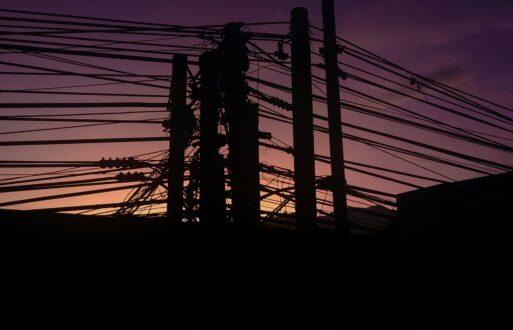Disclaimer: This blog post, which answers “How do minimum run time and minimum down time parameters limit generator cycling in MISO?,” was generated using PCI’s ISO/RTO Documentation AI Chatbot, powered by ChatGPT. While the content is based on curated market documentation, it is intended for informational purposes only and may not reflect the most up-to-date or comprehensive information. We recommend verifying any key details directly with relevant sources before making business decisions.
For the latest answer to this question, generated live, visit our free ISO/RTO Documentation Chatbot.
When it comes to managing energy markets, the Midwest Independent System Operator (MISO) relies on a delicate balance of rules and parameters to ensure reliability and efficiency. Two critical parameters—minimum run time and minimum down time—play a pivotal role in limiting generator cycling. These parameters aren’t just technical jargon; they directly influence how generators are committed and dispatched, shaping the flexibility of the grid and the economics of energy production.
In this blog post, we’ll explore how minimum run time and minimum down time are used in MISO’s Security Constrained Unit Commitment (SCUC) and Security Constrained Economic Dispatch (SCED) processes. We’ll also dive into why these parameters matter for commitment decisions and how they impact the grid’s operational flexibility.
ISO/RTO Documentation Chatbot
Use our AI to search Business Practice Manuals from ISO/RTO markets at no cost.
What are minimum run time and minimum down time?
Before we dive into the technical details, let’s break down these terms.
Minimum run time refers to the shortest duration a generator must remain online once it’s started. For example, if a generator has a minimum run time of three hours, it can’t be shut down before that period ends, even if demand drops. This ensures that the generator operates efficiently and avoids unnecessary wear and tear from frequent cycling.
Minimum down time, on the other hand, is the minimum period a generator must remain offline after it’s shut down. This parameter accounts for the time needed for maintenance, cooling, or other operational constraints before the generator can be restarted.
How these parameters are used in SCUC and SCED
MISO uses SCUC and SCED to manage the grid’s operations, and minimum run time and minimum down time are baked into these processes.
In SCUC: The SCUC process determines which generators should be committed to meet the next day’s energy demand. Here, minimum run time and minimum down time constraints are critical. For instance, SCUC ensures that a generator’s schedule doesn’t violate its minimum down time after being shut down. Similarly, if a generator is committed, SCUC guarantees it will run for at least its minimum run time, even if demand forecasts change during the day. This is particularly important for ensuring that generators with longer startup times or higher costs are used efficiently.
In SCED: SCED handles real-time dispatch, adjusting generator output to match demand while respecting operational constraints. Minimum run time and minimum down time parameters ensure that SCED doesn’t shut down a generator prematurely or restart it too soon after a shutdown. This prevents operational inefficiencies and helps maintain grid stability.
Why these parameters matter for commitment decisions and dispatch flexibility
The importance of minimum run time and minimum down time goes beyond just following rules—they’re essential for balancing reliability, cost, and flexibility.
Reliability: These parameters ensure that generators are available when needed and aren’t cycled too frequently, which could lead to mechanical failures or reduced lifespan.
Cost efficiency: By limiting unnecessary cycling, these constraints help reduce operational costs. Frequent starts and stops can be expensive due to fuel costs, wear and tear, and additional maintenance.
Dispatch flexibility: While these parameters provide structure, they can also limit flexibility. For example, if a generator with a long minimum run time is committed, it might reduce the grid’s ability to quickly adapt to changes in demand or renewable energy output. This trade-off is a key consideration in MISO’s planning and operations.
The bigger picture: Balancing constraints and flexibility
Minimum run time and minimum down time parameters are more than just numbers in a spreadsheet—they’re the guardrails that keep MISO’s grid running smoothly. By ensuring generators operate efficiently and reliably, these constraints help balance the competing demands of cost, reliability, and flexibility. However, they also highlight the challenges of managing a dynamic grid, especially as renewable energy sources with different operational characteristics become more prevalent.
Understanding these parameters gives us a glimpse into the complex decisions that keep the lights on and the energy flowing. Whether you’re a market participant, a policymaker, or just an energy enthusiast, knowing how these rules shape the grid can deepen your appreciation for the intricate dance of energy markets.
For the latest answer to this question, generated live, visit our free ISO/RTO Documentation Chatbot.







